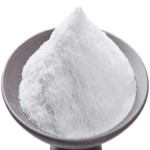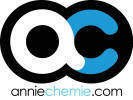Sodium Propionate SDS of Suppliers Exporters, Manufacturers
Sodium Propionate
CAS Number: 137-40-6 & 6700-17-0 USP NF BP Ph Eur FCC Food Grade Suppliers Exporters, Manufacturers

Please visit Main Page of Sodium Propionate USP NF BP Ph Eur FCC Food Grade Manufacturers.
Sodium Propionate SDS, Safety Data Sheet
MSDS Sheet 13-May-22
1. Product Identification
Product Name & Other Names: Sodium Propionate or Propionic Acid Sodium Salt.
CAS No.: 137-40-6
EINECS EC Number: 205-290-4
Relevant uses and uses advised against (if any): Industrial Manufacturing.
Suppliers: As per letterhead.
2. Hazards Identification
GHS, Globally Harmonized System Classification in accordance with 29 CFR 1910
Classification according to Regulation (EC) No 1272/2008
Skin corrosion/irritation Category 2, H315
Serious eye damage/eye irritation Category 2B, H320
Specific target organ toxicity, single exposure; Respiratory tract irritation Category 3, H335
Labeling according to Regulation (EC) No 1272/2008
GHS Label Elements  Irritant |
Signal Word: Warning
Hazard statements:
H315: Causes skin irritation.
H320: Causes eye irritation.
H335: May cause respiratory irritation.
Precautionary statements:
P261: Avoid breathing dust/fume/gas/mist/vapors/spray.
P264: Wash … thoroughly after handling.
P280: Wear protective gloves/protective clothing/eye protection/face protection.
P302+P352: IF ON SKIN: Wash with plenty of soap and water.
P332+313: If skin irritation occurs: Get medical advice/attention.
P304+P340: IF INHALED: Remove victim to fresh air and keep at rest in a position comfortable for breathing.
P305+P351+P338: IF IN EYES: Rinse cautiously with water for several minutes. Remove contact lenses, if present and easy to do. Continue rinsing.
P337+313: If eye irritation persists get medical advice/attention.
3. Composition/Information on Ingredients
Product Name & Other Names: Sodium Propionate or Propionic Acid Sodium Salt.
CAS Number: 137-40-6
EINECS EC Number: 205-290-4.
4. First Aid Measures
Always seek medical attention after first aid measures are provided.
Inhalation: If a person breathes in large amounts of Sodium Propionate, move the exposed person to fresh air.
Ingestion: If large amounts were swallowed, give water to drink and get medical advice.
Skin Contact: In case of contact with Sodium Propionate, immediately wash skin with plenty of soap and water for at least 15 minutes.
Eye Contact: Check for and remove any contact lenses. In case of contact, immediately flush eyes with plenty of water for at least 15 minutes. Cold water may be used. Get medical attention.
5. Fire Fighting Measures
Fire: Not expected to be a fire hazard. However, it can burn at high temperatures.
Fire Extinguishing Media: Use extinguishing media appropriate for surrounding fire.
Extinguishing Media Not recommended: Avoid using solid water jet as it may scatter the fire.
Special Information: In the event of a fire, wear full protective clothing and NIOSH-approved self-contained breathing apparatus with full face piece operated in the pressure demand or other positive pressure mode. At elevated temperatures under fire conditions, it may produce toxic or irritating fumes. Fire-extinguishing work is done from the windward and fire-extinguishing method according to the surrounding is used.
6. Accidental Release Measures
Personal precautions, protective equipment, and emergency procedures: Avoid breathing dust/fumes/gas/mist/vapors/spray. Use individual protective equipment (waterproof boots, suitable protective clothing, safety glasses, etc.). Do not approach facing the wind.
Environmental precautions: Do not let the product enter drains, soil, or water sources.
Methods and materials used for containment cleanup procedures and Storage: Do not inhale dust, vapors, mist, or gas. Avoid dust formation. Contain spilled material. Cover with an inert, non-combustible absorbent material, (e.g., sand, earth, diatomaceous earth, vermiculite). Use a shovel to put the material into a convenient waste disposal container. Finish cleaning by spreading water on the contaminated surface and allow to evacuate as per law.
7. Handling and Storage
Precautions for safe handling: Apply according to good manufacturing and industrial hygiene practices. Ensure proper ventilation. In case of insufficient ventilation, wear suitable respiratory equipment. Wash thoroughly after handling. Do not drink, eat, or smoke while handling. Avoid contact with skin, eyes, and clothing. Minimize dust generation. Avoid breathing dust/fumes/gas/mist/vapors/spray. Use individual protective equipment (waterproof boots, suitable protective clothing, safety glasses, etc.).
Conditions for safe storage, including any incompatibilities: Store in cool, dry, and ventilated area away from heat sources and protected from sunlight in tightly closed original container. Keep air contact to a minimum. Store protected from heat, sparks and ignition sources and incompatible materials. Do not store with incompatible materials like strong oxidizing agents.
8. Exposure Controls/Personal Protection
Exposure Limits: This product does not contain any hazardous materials with occupational exposure limits established by the region-specific regulatory bodies.
Ventilation System: In general, dilution ventilation is a satisfactory health hazard control for this substance. However, if conditions of use create discomfort to the worker, a local exhaust system should be considered.
Personal Respirators (NIOSH Approved): For conditions of use where exposure to Sodium Propionate is apparent and engineering controls are not feasible, consult an industrial hygienist.
Skin Protection: Wear protective gloves and clean body-covering clothing.
Eye Protection: Use chemical safety goggles and/or full face shield where dusting or splashing of solutions is possible. Maintain eye wash fountain and quick-drench facilities in work area.
Other Control Measures: Maintain good housekeeping in work area. Handle in accordance with good industrial hygiene and safety practice.
9. Physical and Chemical Properties
Appearance: White powder.
Odor: Not available.
Odor threshold: Not applicable.
pH: No data found.
Relative density: No data found.
Boiling Point: No data found.
Melting Point: 285C (545F).
Flash point: No data found.
Auto-ignition temperature: No data found.
Decomposition temperature: No data found.
Upper/lower flammability or explosive limits: No data found.
Vapor pressure: No data found.
Vapor density: No data found.
Evaporation rate: No data found.
Flammability (solid, gas): No data found.
Partition coefficient: n-octanol/water: No data found.
Solubility: Appreciable (> 10%)
Viscosity: No data found.
Molecular Weight: 96.06
Chemical Formula: CH3CH2COONa
10. Stability and Reactivity
Stability: Stable under ordinary conditions of use and storage.
Hazardous Decomposition Products: Carbon monoxide, carbon dioxide.
Hazardous Polymerization: Will not occur.
Incompatibilities: Strong oxidizing agents.
11. Toxicological Information
LD50 Oral - mouse - 6.332 mg/kg
LD50 Dermal - rabbit - 1.640 mg/kg
Carcinogenicity: No component of this product present at levels greater than or equal to 0.1% is identified as possible or confirmed human carcinogen by IARC, ACGIH, OSHA and NTP.
Teratogenic Effects: No data found.
Mutagenic Effects: No data found.
Developmental Toxicity: No data found.
Reproductive Effects: No data found.
12. Ecological Information
Toxicity to fish: LC50 - Pimephales promelas (fathead minnow) - 4.740 mg/l - 96 h
Persistence and Degradability: Unlikely to persist due to water solubility.
Mobility: Likely to be mobile due to water solubility.
Bioaccumulation/ Accumulation: No data found.
Results of PBT and vPvB assessment: No data found.
13. Disposal Considerations
Whatever cannot be saved for recovery or recycling should be managed in an appropriate and approved waste disposal facility.
14. Transport Information
DOT USA, TDG Canada & ADR/RID Europe: Not controlled.
IATA/ICAO: Not controlled.
IMDG/IMO: Not controlled.
15. Regulatory Information
USA Regulations:
California Proposition 65: Not listed.
SARA 311/312: See section 2.
Section 16 - Additional Information
DISCLAIMER: The information and recommendations set forth herein are presented in good faith and believed correct as of the date hereof. It is compiled from various sources, and it is not necessarily all inclusive nor fully adequate in every circumstance. In addition, these suggestions should not be confused with nor followed in violation of applicable laws, regulations, rules, or insurance requirements applicable. This SDS MSDS sheet is intended only as a guide to the appropriate precautionary handling of the material by a professionally trained person using this product. Individuals receiving the information must exercise their independent judgment in determining its appropriateness for a particular purpose. This shall not constitute a guarantee for any specific product features and shall not establish a legally valid contractual relationship. In no case shall our company be liable to loss or damages by the product user.

Please visit Technical Data Sheet of Sodium Propionate USP NF BP Ph Eur FCC Food Grade Suppliers.
Calcium Propionate CAS Number 4075-81-4 & Sodium Propionate CAS Number 137-40-6 & 6700-17-0 Supplier Exporter, Manufacturer:
Annie Chemie P Ltd
Mumbai 4000010, INDIA
With Agents and offices in UAE, USA, Europe.
e-mail: info@anniechemie.com
Copyright and Usual Disclaimer is Applicable.
June 2, 2025
Exporters to USA, Canada, UK, Europe, UAE, Nigeria, Algeria, Turkey, Mexico, Brazil, Chile, Argentina, Australia, Dubai etc.
Perfection is made up of small things and that is a big thing.
